Library
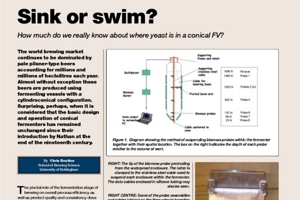 IBD Membership Required
IBD Membership Required
Sink or swim?
By: Chris Boulton
01/09/2007
The world brewing market continues to be dominated by pale pilsner-type beers accounting for millions and millions of hectolitres each year. Almost without exception these beers are produced using fermenting vessels with a cylindroconical configuration. Surprising, perhaps, when it is considered that the basic design and operation of conical fermenters has remained unchanged since their introduction by Nathan at the end of the nineteenth century.
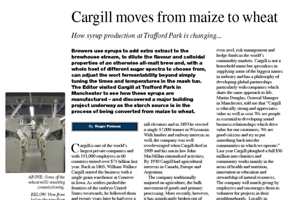 IBD Membership Required
IBD Membership Required
Cargill moves from maize to wheat
By: Roger Putman
01/09/2007
Brewers use syrups to add extra extract to the brewhouse stream, to dilute the flavour and colloidal properties of an otherwise all-malt brew and, with a whole host of different sugar spectra to choose from, can adjust the wort fermentability beyond simply tuning the times and temperatures in the mash tun. The Editor visited Cargill at Trafford Park in Manchester to see how these syrups are manufactured – and discovered a major building project underway as the starch source is in the process of being converted from maize to wheat.
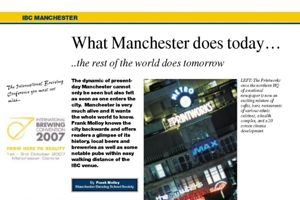 IBD Membership Required
IBD Membership Required
What Manchester does today …
By: Frank Molloy
01/09/2007
The dynamic of presentday Manchester cannot only be seen but also felt as soon as one enters the city. Manchester is very much alive and it wants the whole world to know. Frank Molloy knows the city backwards and offers readers a glimpse of its history, local beers and breweries as well as some notable pubs within easy walking distance of the IBC venue.
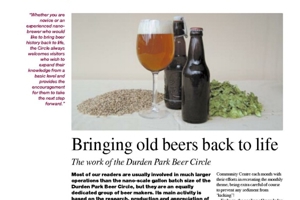 IBD Membership Required
IBD Membership Required
Bringing old beers back to life
By: Roger Putman
01/09/2007
Most of our readers are usually involved in much larger operations than the nano-scale gallon batch size of the Durden Park Beer Circle, but they are an equally dedicated group of beer makers. Its main activity is based on the research, production and appreciation of old British beers particularly from around 1840–1914 when a vast range of beers was brewed. Not for them, the reduction in original gravity and hop rate to suit the palate of the 21st century, they present beers as close to perceived reality as modern materials will allow.
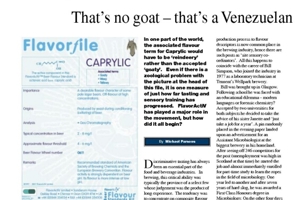 IBD Membership Required
IBD Membership Required
That’s no goat – that’s a Venezuelan Mountain Reindeer
By: Michael Parsons
01/09/2007
In one part of the world, the associated flavour term for Caprylic would have to be ‘reindeery’ rather than the accepted ‘goaty’. Even if there is a zoological problem with the picture at the head of this file, it is one measure of just how far tasting and sensory training has progressed. FlavorActiV has played a major role in the movement, but how did it all begin?
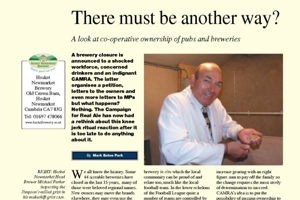 IBD Membership Required
IBD Membership Required
There must be another way?
By: Mark Eaton-Park
01/09/2007
A brewery closure is announced to a shocked workforce, concerned drinkers and an indignant CAMRA. The latter organises a petition, letters to the owners and even more letters to MPs but what happens? Nothing. The Campaign for Real Ale has now had a rethink about this knee jerk ritual reaction after it is too late to do anything about it.
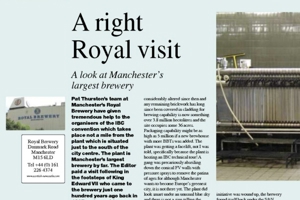 IBD Membership Required
IBD Membership Required
A right Royal visit
By: Roger Putman
01/09/2007
Pat Thurston’s team at Manchester’s Royal Brewery have given tremendous help to the organisers of the IBC convention which takes place not a mile from the plant which is situated just to the south of the city centre. The plant is Manchester’s largest brewery by far. The Editor paid a visit following in the footsteps of King Edward VII who came to the brewery just one hundred years ago back in 1907 and gave his name to it.
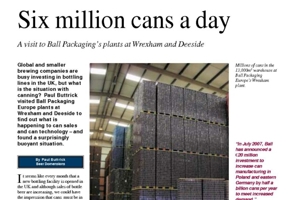 IBD Membership Required
IBD Membership Required
Six million cans a day
By: Paul Buttrick
01/09/2007
Global and smaller brewing companies are busy investing in bottling lines in the UK, but what is the situation with canning? Paul Buttrick visited Ball Packaging Europe plants at Wrexham and Deeside to find out what is happening to can sales and can technology – and found a surprisingly buoyant situation.
Some of the content requires an active membership to view.
You can find out more here
Some of the content requires an active membership to view.
You can find out more here
